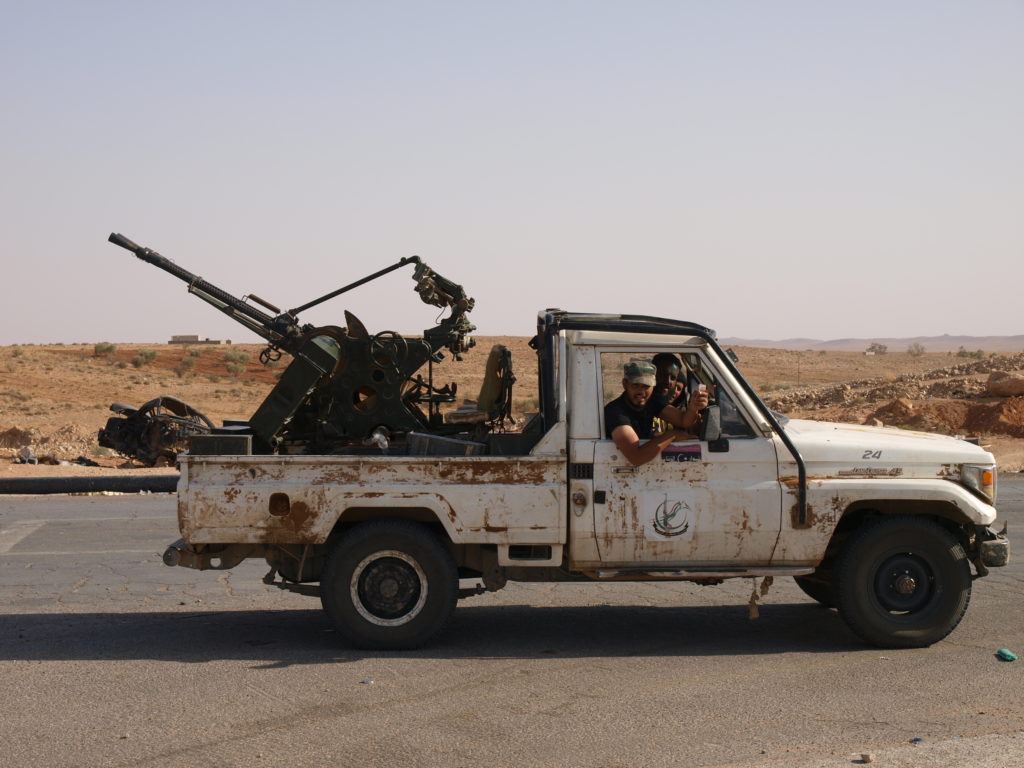
New York- Last month I was featured in an Al Jazeera Arabic documentary entitled For the rest of the story – Hifter .. General Coups about Libyan General/Colonel/strongman/warlord Khalifa Haftar’s (I prefer the more commonly accepted transliteration of his last name) decades-long relationship with the United States. In the film I discuss the once infamous battle of Ouadi Doum* that took place in northern Chad in March 1987 between Libyan occupation forces led by Haftar and Chadian state forces defending the then government of the US-aligned, ruthless President Hissène Habré.
*”Ouadi” is the Francophone transliteration of Wadi.
Ouadi Doum lay in the Sahara in what was then known as the Borkou-Ennedi-Tibesti Prefecture, or simply BET (Chad’s administrative political geography has long since be reorganised), and was a crucial target for several reasons. Seen through the prism of the Cold War, the Libyans had installed the latest Soviet and Czechoslovak military hardware which both the French and Americans were eager to have captured by proxy forces to deconstruct and examine. Ouadi Doum was also significant because the aircraft positioned there were threatening the Chadian capital of N’Djamena much further south.
It should also be noted that President Habré hailed from the town of Faya Largeau, the adminstrative centre of the aforementioned BET region at the time, and for him to recapture the Libyan-occupied north of the country–thereby hoping to end the territorial dispute over the Aouzou strip–took on a personal dimension. The Aouzou dispute was rooted in the ashes of World War I when Italian Libya tried to forge an agreement with French Chad for the area to be formally annexed to Libya. However the agreement between the colonial powers failed to ever be formally ratified an Aouzou ended up as part of post-colonial Chad much to the dismay of the Qadaffi regime who much preferred southern Libya’s Fezzan region extend far deeper into the Sahara partly in hopes of gaining purported mineral wealth there.

The Chadian military finally gained the upper hand against their Libyan adversaries-most notably Haftar himself-during what came to be known as the “Toyota War” where the ‘technical’ term was coined referred to a Toyota Hi-lux pickup truck mounted with a heavy calibre machine gun in the bed. This allowed to increased agility for the Chadians when compared to the lumbering heavy hardware and artillery of the Soviet-supplied troops led by Haftar,
So why is this story of a long forgotten war between two African states during the late Cold War period relevant today?
At the time of this writing, Haftar’s forces, known as the Libyan National Army dating back to his time as a POW in Chad turned CIA asset, are bogged down in an assault on Tripoli against the internationally recognised soldiers of the Government of National Accord, or simply GNA in Twitter-speak. Haftar seeks to overthrow the GNA led by Prime Minister Fayez al-Sarraj. It is understood that Haftar’s men are being supported by Egypt, which neighbours the Cyrenaica region he mostly controls, the UAE, and contract-for-hire fighters from the Russian Federation’s premiere private military company, Wagner Group. As if this were not complex enough, reports have been surfacing that Sudanese mercenaries/militiamen have been surfacing on the Libyan battlefield to support Hatftar’s putsch in Triplotania.
The GNA on the other hand is being supported by Turkey and to a lesser extent, Qatar.